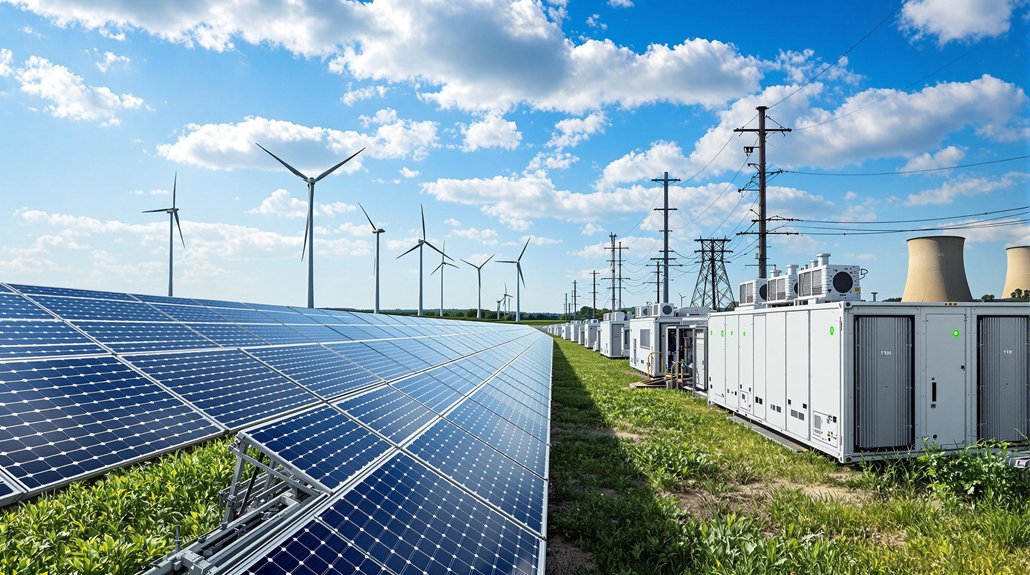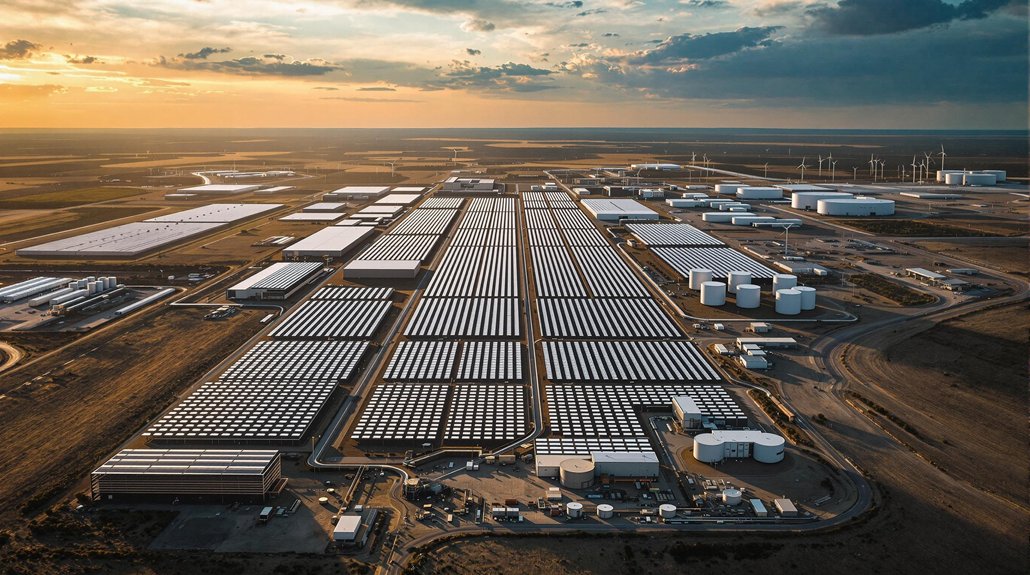Bitcoin mining has undergone a significant transformation, with renewable energy now powering approximately 54.5% to 56% of operations. This marks a dramatic increase from just 20% in 2011, while coal usage has plummeted from 63% to 20%. Miners increasingly serve as “buyers of last resort” for excess energy, helping balance electrical grids during production fluctuations. Industry projections suggest renewable usage could reach 74% by 2030, signaling a continuing green shift in cryptocurrency production.
While Bitcoin mining has faced criticism for its energy use, a dramatic alteration toward renewable energy sources is reshaping the industry. Recent data shows that renewable energy powers approximately 54.5% to 56% of Bitcoin mining operations worldwide. This marks a significant increase from just 20% in 2011, with projections suggesting this figure could reach up to 74% by 2030.
The change comes as miners seek cost-effective energy solutions. Wind, solar, and hydroelectric power now provide economically viable alternatives to traditional fossil fuels. Government policies and economic incentives are accelerating this alteration, making renewable energy an increasingly attractive option for mining operations. This shift away from carbon-intensive energy sources has led to a notable decrease in coal usage from 63% to 20% between 2011 and 2024.
Bitcoin miners are also playing a unique role in the renewable energy ecosystem. They function as “buyers of last resort” for excess energy that would otherwise go to waste. When solar or wind farms generate more electricity than the grid demands, miners can quickly ramp up operations to use this surplus. This flexibility helps balance electrical grids during production fluctuations. Studies from SSRN (2024) show that Bitcoin mining operations can significantly enhance grid stability when integrated with renewable energy sources.
Bitcoin miners serve as essential grid-balancers, utilizing surplus renewable energy that would otherwise be wasted during production peaks.
The environmental impact of Bitcoin mining is improving as a result. Energy efficiency advancements in mining hardware have reduced consumption despite network growth. Additionally, the use of flared natural gas for mining prevents wasteful emissions that would otherwise enter the atmosphere. The industry’s adaptation is part of a global trend where smart grids are revolutionizing energy distribution efficiency across sectors.
This green transformation creates economic benefits beyond the mining industry. Bitcoin operations make renewable energy projects more financially viable by providing a reliable customer for excess production. This relationship fosters investment in clean technology and helps stabilize energy prices by preventing supply-demand mismatches.
The MiCA Crypto Alliance predicts renewable energy will power 70% of Bitcoin mining by 2030. As the price of Bitcoin rises, more miners enter the network, increasing demand for renewable sources. Efficiency improvements in mining devices continue to decrease energy consumption per transaction, further promoting sustainable practices.
The industry’s change toward renewables demonstrates that economic incentives can align with environmental goals, creating a more sustainable future for cryptocurrency mining.








